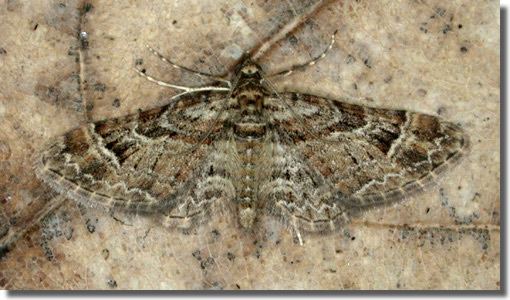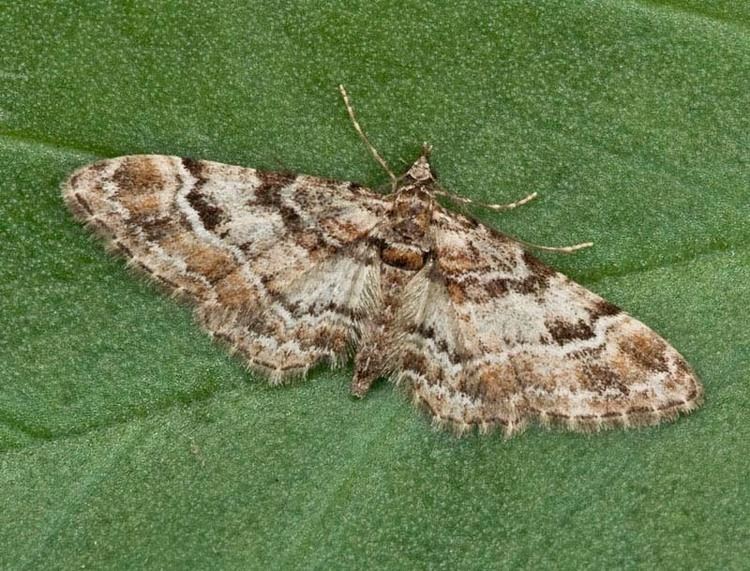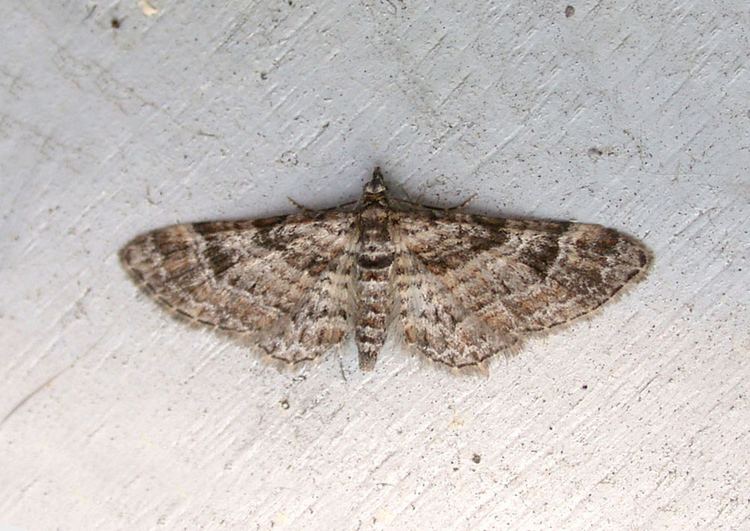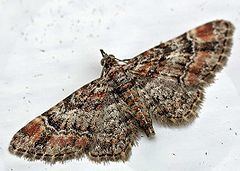Higher classification Gymnoscelis | Family Geometridae Scientific name Gymnoscelis rufifasciata Rank Species | |
 | ||
Similar Gymnoscelis, Riband wave, Garden carpet, Butterflies and moths, Willow beauty | ||
The double-striped pug (Gymnoscelis rufifasciata) is a moth of the family Geometridae. It is a widespread and common species, being found throughout the Palearctic region, including the Near East and North Africa.

This is a variable species but always easy to recognize due to the two prominent dark fascia across each forewing which give the species its common name.The forewing ground colour is ranges from light to dark reddish brown.The crosslines are distinct. The inner margin of the pale white sub-marginal line bears black marks. The hindwings are pale grey with darker fringes, darker lines and a small black discal spot. There is a dark band across the basal segments of the abdomen.The wingspan is 15–19 mm.

Two, sometimes three, broods are produced each year and the adults are on the wing in April and May (sometimes earlier), July and August, and sometimes later in the autumn. Later broods are more heavily marked.It flies at night and is attracted to light and flowers, both of its food plants and others.

The larva feeds on the flowers of a huge range of plants (see list below) and has also been known to feed on the larvae of other Lepidoptera. The species overwinters as a pupa.


